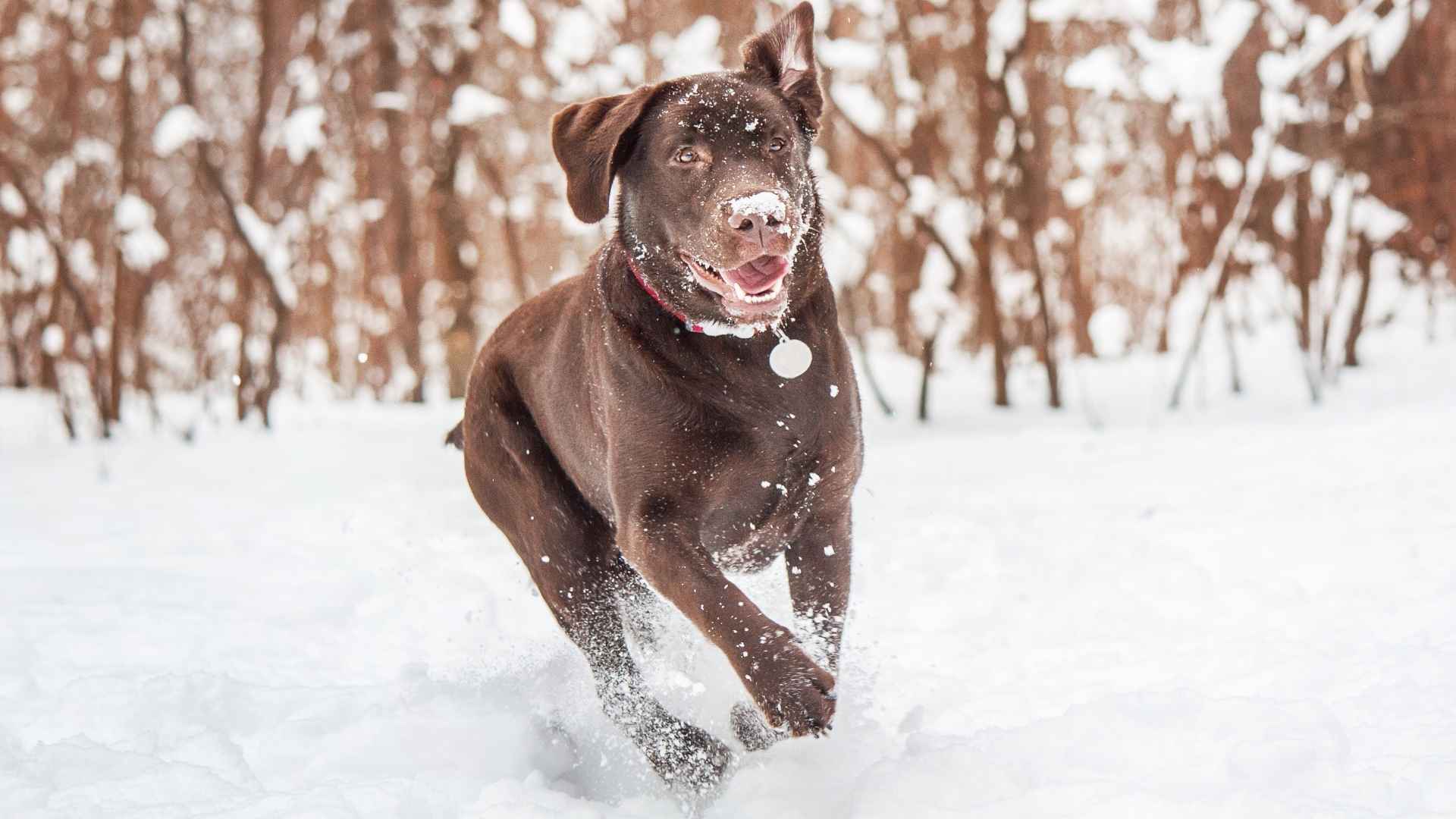When winter’s chill sets in, dog owners often wonder whether their furry companions are up for the cold, especially those with rich, chocolate-colored coats. Some dogs are naturally equipped to handle icy temperatures thanks to their dense fur, robust build, and heritage rooted in rugged climates. If you’re a fan of deep brown, chocolate-coated canines and live in a colder region, you’ll be happy to know that certain breeds combine beauty with brawn, thriving even when snow is on the ground.
Among them, the chocolate Labrador Retriever stands out not just for its stunning coat but also for its adaptability. Labs have earned a reputation for being loyal, intelligent, and versatile, qualities that also extend to their performance in frosty conditions. Thanks to their water-resistant double coats and energetic personalities, Labs and other similar breeds can enjoy winter activities as much as their owners do.
In this article, we’ll explore several chocolate dog breeds that are especially suited for cold weather. Whether you’re looking for a winter hiking partner or a deep snow-loving snuggle buddy, these breeds bring warmth, resilience, and charm to even the coldest climates.
Chocolate Dog Breeds For Cold Weather
1. Labrador Retriever
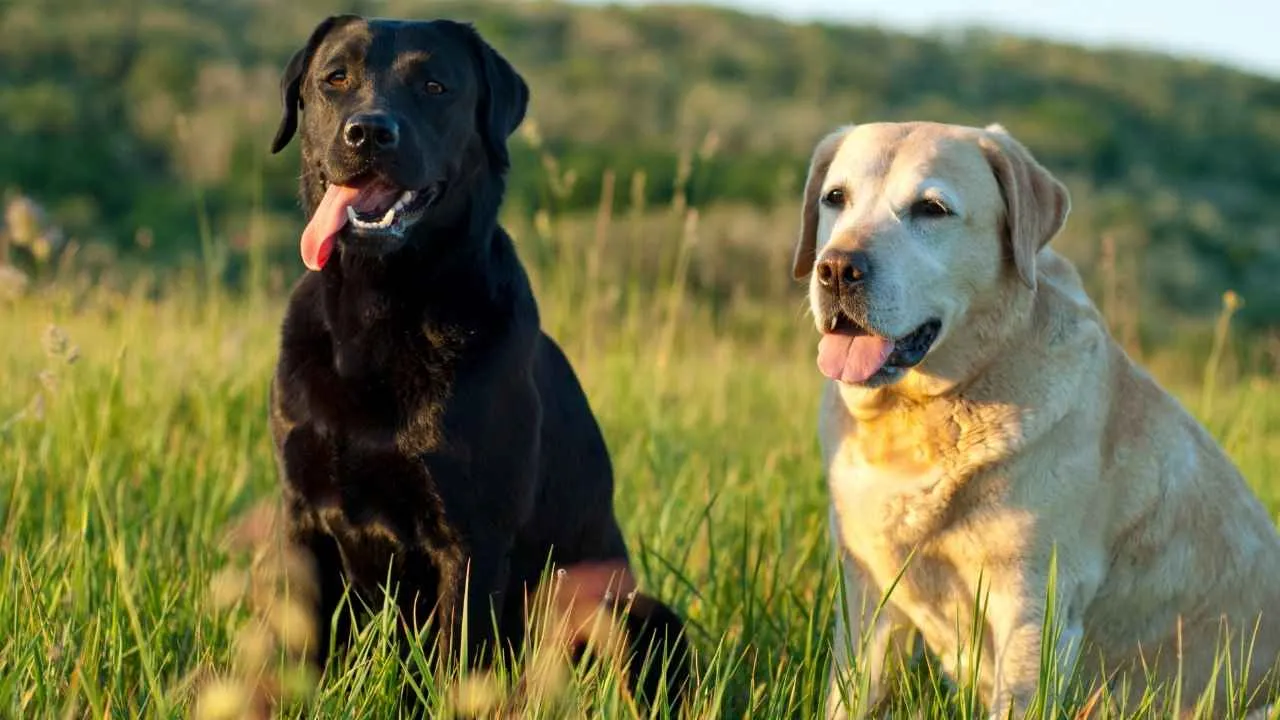
One of the most beloved and recognized breeds worldwide, the Labrador Retriever, often called the Lab, originated in Newfoundland and was refined in England during the 19th century. This friendly, outgoing breed stands 21.5 to 24.5 inches tall and weighs between 55 to 80 pounds, with a dense, water-resistant double coat ideal for enduring cold and wet environments.
Labs come in three recognized colors: yellow, black, and the rich, chocolate hue, which is genetically determined by recessive alleles. Their well-balanced build, wide head, expressive eyes, and famously thick fur “otter tail” make them instantly recognizable.
Care Needs
Labrador Retrievers require consistent daily exercise to stay physically and mentally stimulated. According to the AKC, the Labrador Retriever is active and outgoing. Activities like swimming, long walks, and fetch are especially beneficial. Their double coat offers great insulation, but it also sheds seasonally, so regular brushing helps manage loose hair and keep the coat healthy.
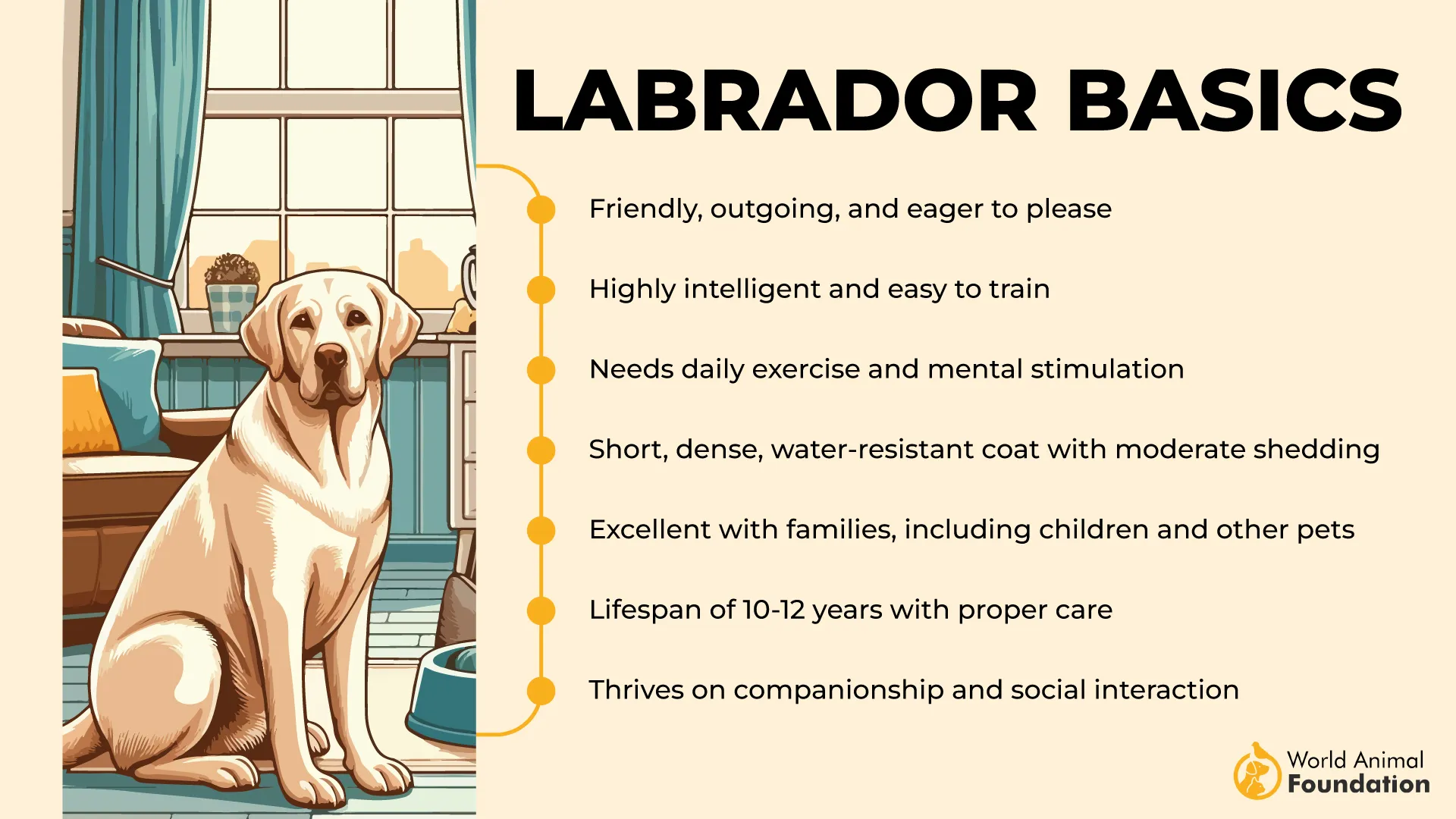
They are generally healthy, but pet parents should be aware of potential issues like hip dysplasia and obesity. Routine vet checkups, a balanced diet, and ample activity are crucial to keeping this athletic breed in peak condition.
Fun Fact: The Labrador Retriever was the American Kennel Club’s most registered breed for 31 consecutive years before being unseated by the French Bulldog in 2022.
2. Newfoundland
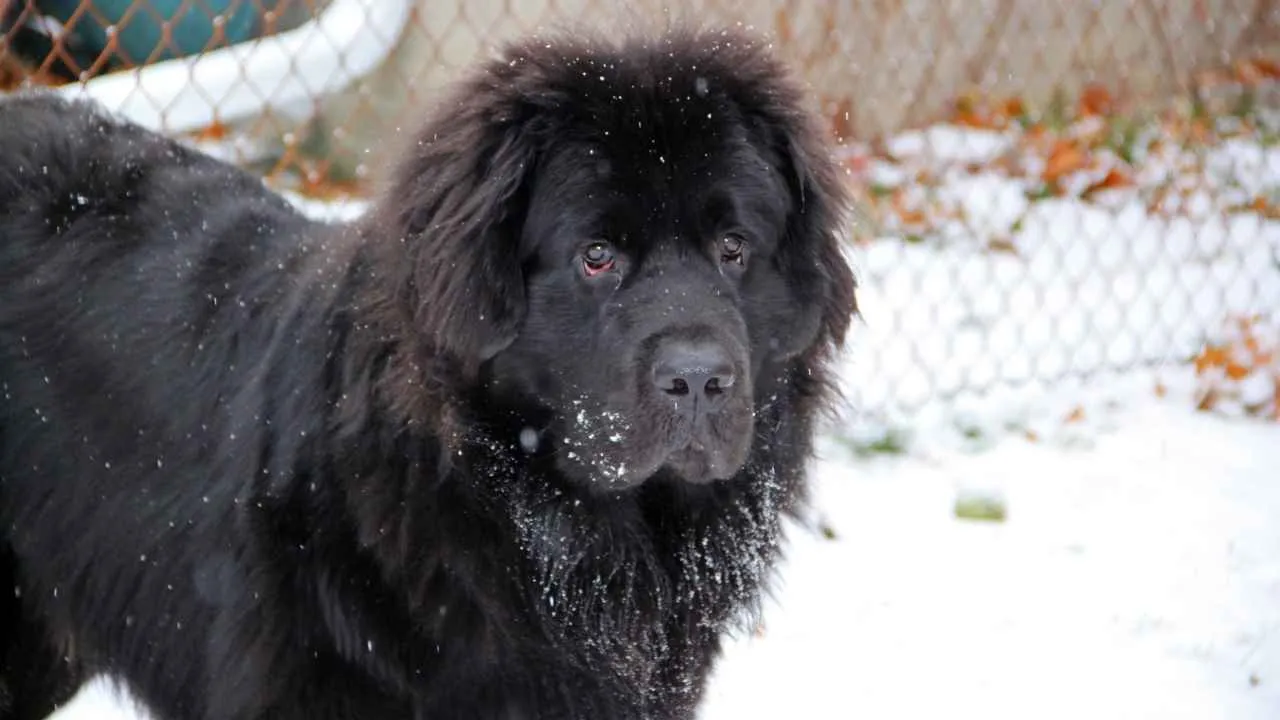
The Newfoundland, also affectionately known as the “Newf” or “Newfie,” is a massive working dog originally developed on Newfoundland island in Canada. With powerful hindquarters, webbed feet, and a dense, oily double coat, this breed was bred to rescue people from icy waters and serve as a dependable draft animal.
Typically weighing between 100–150 pounds and standing 26–28 inches tall, Newfoundlands are not only strong swimmers but also known for their sweet, calm demeanor, earning them the nickname “Nanny Dog.” While black is the most common coat color, they also come in chocolate (brown), gray, and the striking black-and-white Landseer variation.
Care Needs
Newfoundland dogs have a double coat and are known for their gentle nature, as per WebMD. They shed year-round and require frequent brushing to prevent matting and manage loose hair. Their size means they drool more than most breeds, so wiping their face regularly is a must.
While they don’t need excessive exercise, daily walks and outdoor play keep them healthy and content. They thrive in cooler climates and enjoy winter activities, making them the best dog breeds for cold weather.
Fact: A Newfie is famously credited with saving Napoleon Bonaparte from drowning during his escape from Elba in 1815.
3. Chesapeake Bay Retriever
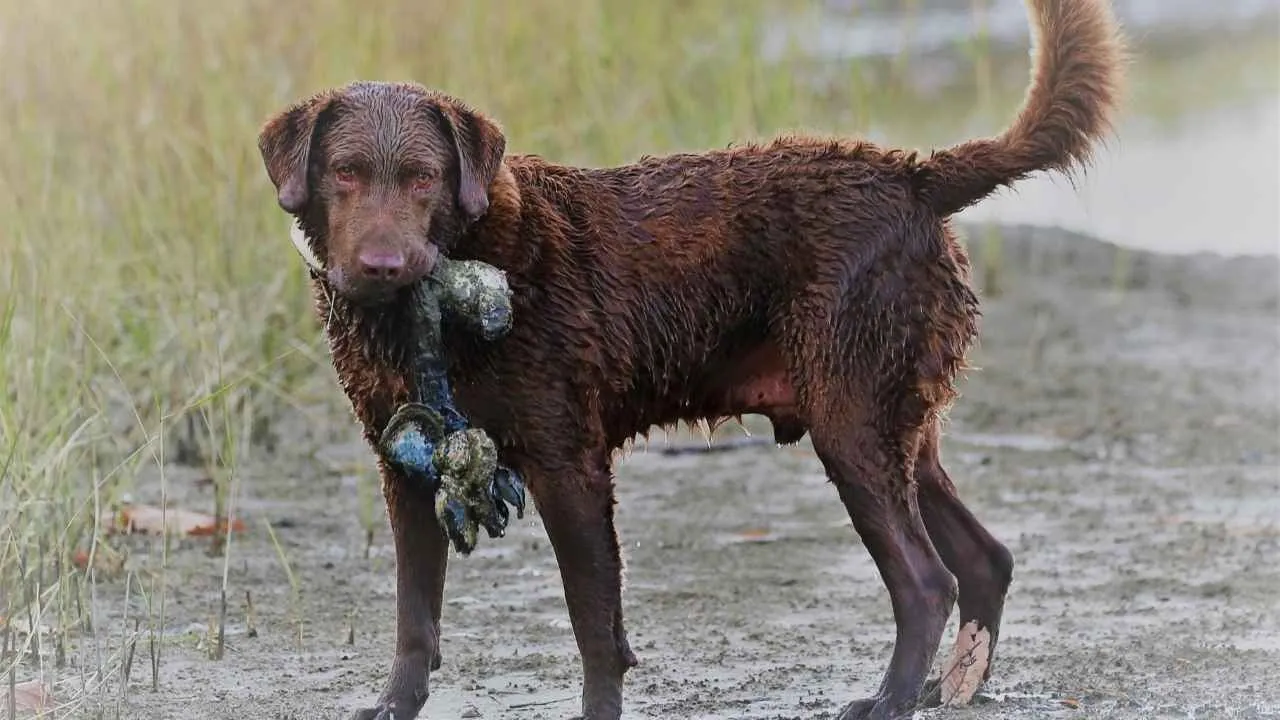
Known affectionately as the “Chessie,” the Chesapeake Bay Retriever is a powerful American sporting breed developed in the 19th century along the Mid-Atlantic coast. Purina reports that the Chesapeake Bay Retriever is a loyal, affectionate, and sensitive family dog with a cheerful disposition.
Originating from English stock, this retriever was selectively bred for its excellence in retrieving waterfowl under harsh conditions. Standing 21–26 inches tall and weighing 55–80 pounds, these affectionate dogs are built for strength, endurance, and cold-weather resilience.
Its most defining physical feature is a dense, water-repellent, wavy coat in shades of chocolate brown, sedge, or deadgrass, combined with keen yellow-amber eyes and a broad head with loose-set ears. Unlike the more sociable retriever breeds, the Chessie is independent, alert, and protective, traits that make it an exceptional hunting dog and devoted companion.
Care Needs
The Chesapeake Bay Retriever requires a structured health and grooming routine. Its thick, oily coat needs weekly brushing to remove debris and manage shedding. Regular ear checks and dental hygiene are essential, and ample physical and mental stimulation is vital due to the breed’s working background.
Chessies are predisposed to some genetic conditions, so routine veterinary checkups are key to preventive care. A balanced diet and controlled weight also help support their joint health and longevity.
Fun Fact: The Chessie’s reputation as a duck retriever was so unmatched that market hunters in the 1800s relied on them exclusively for retrieving downed waterfowl in freezing waters.
4. German Shorthaired Pointer
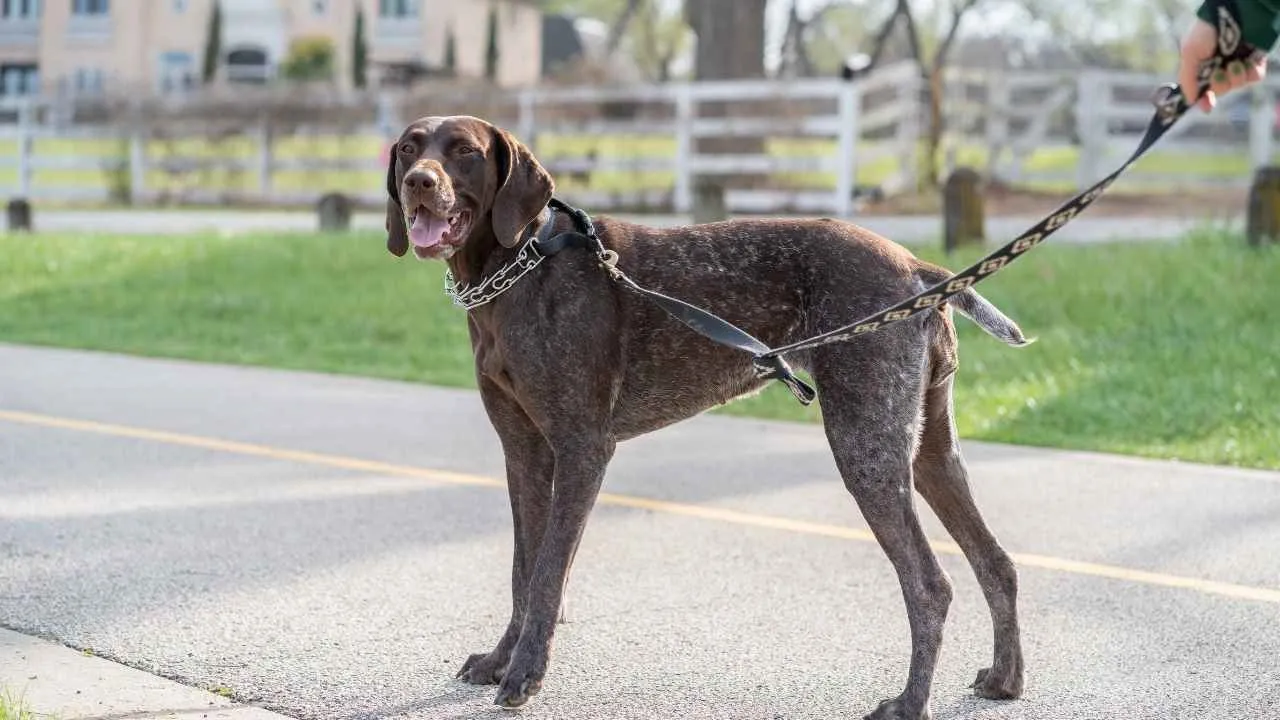
The German Shorthaired Pointer (GSP), also known as the Deutsch Kurzhaar, is a versatile and athletic hunting breed that originated in Germany during the 1700s. This medium-to-large breed stands between 21–25 inches tall and weighs 45–70 pounds.
Chocolate GSPs boast a sleek, water-resistant coat in rich brown hues, often complemented by a liver-colored nose and expressive brown eyes. Known for their muscular build and keen instincts, these dogs were bred for tracking, pointing, and retrieving game across various terrains, including cold, rugged climates.
Care Needs
German Shorthaired Pointers are high-energy dogs that thrive with daily vigorous exercise and mental engagement. Their short, dense coat is relatively low maintenance and moderately sheds, but weekly brushing helps keep it healthy. These dogs need access to outdoor activities such as running, swimming, or hiking to maintain their physical and mental health.
While affectionate with families and good with children, early socialization and consistent training are essential for harmonious cohabitation with other pets. Thanks to their intelligence and responsiveness, they also excel in obedience and agility tasks.
Fact: Despite their elegance, German Shorthaired Pointers were originally bred to hunt everything from wild boar to duck, showcasing their remarkable versatility.
5. Flat-Coated Retriever
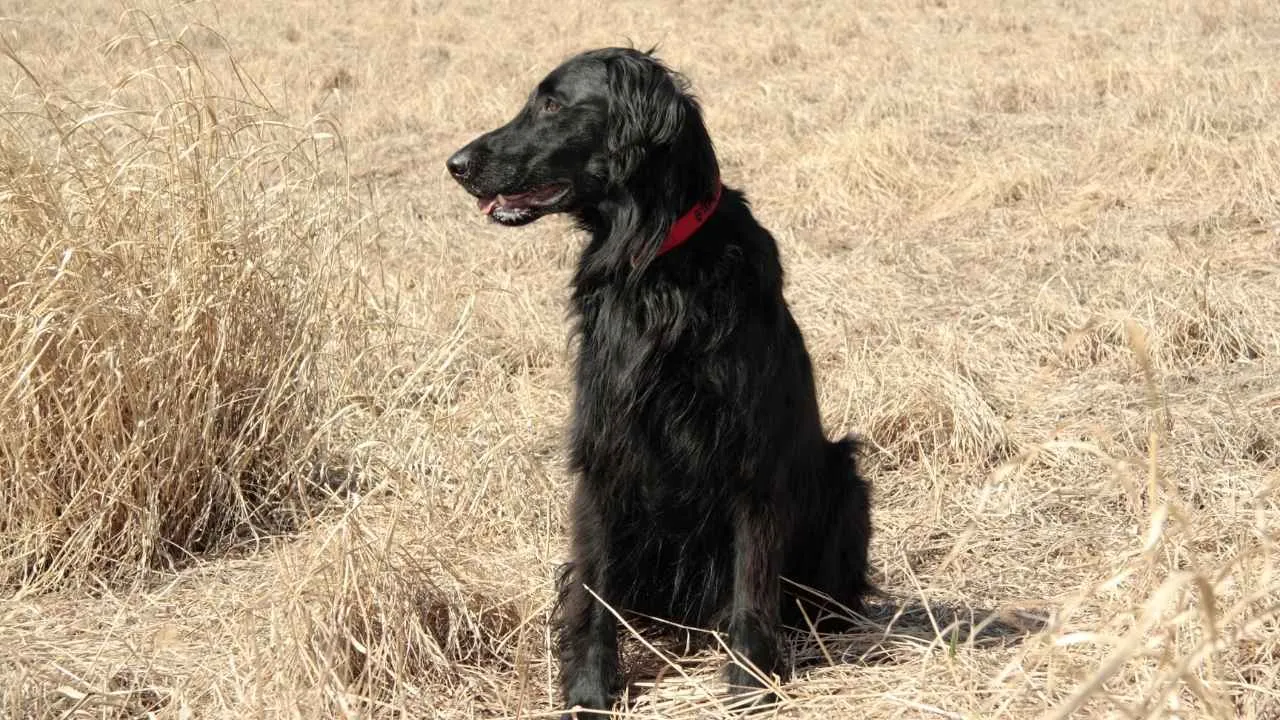
The Flat-Coated Retriever, sometimes called the “ebony retriever,” is a lively and friendly sporting breed that originated in 19th-century England. Initially developed for retrieving game, this breed quickly earned admiration for its cheerful personality, glossy coat, and graceful build.
Recognized by the American Kennel Club in 1915, Flat-Coated Retrievers typically stand between 22 to 24.5 inches tall and weigh around 60 to 70 pounds. Their dense, feathered coat comes in solid black or liver (a rich chocolate hue), which offers moderate protection in colder weather, perfect for outdoor adventures in chillier climates.
Despite their regal appearance, these dogs are known for retaining their playful, puppy-like charm well into adulthood. They are affectionate, social, and highly trainable, making them fantastic family companions.
Care Needs
Flat-Coated Retrievers need consistent daily exercise and mental stimulation. Activities such as long walks, swimming, and agility drills are ideal. Grooming is straightforward, but regular brushing helps maintain their coat’s shine.
Due to their deep chests, they are at risk of bloat,so feeding smaller, scheduled meals and avoiding vigorous activity around mealtimes is essential. Routine vet visits are important for monitoring potential issues like hip dysplasia and gastric dilatation-volvulus (GDV).
Fun Fact: Flat-Coated Retrievers were once among the most popular gun dogs in Britain before Golden Retrievers took the spotlight.
6. Boykin Spaniel
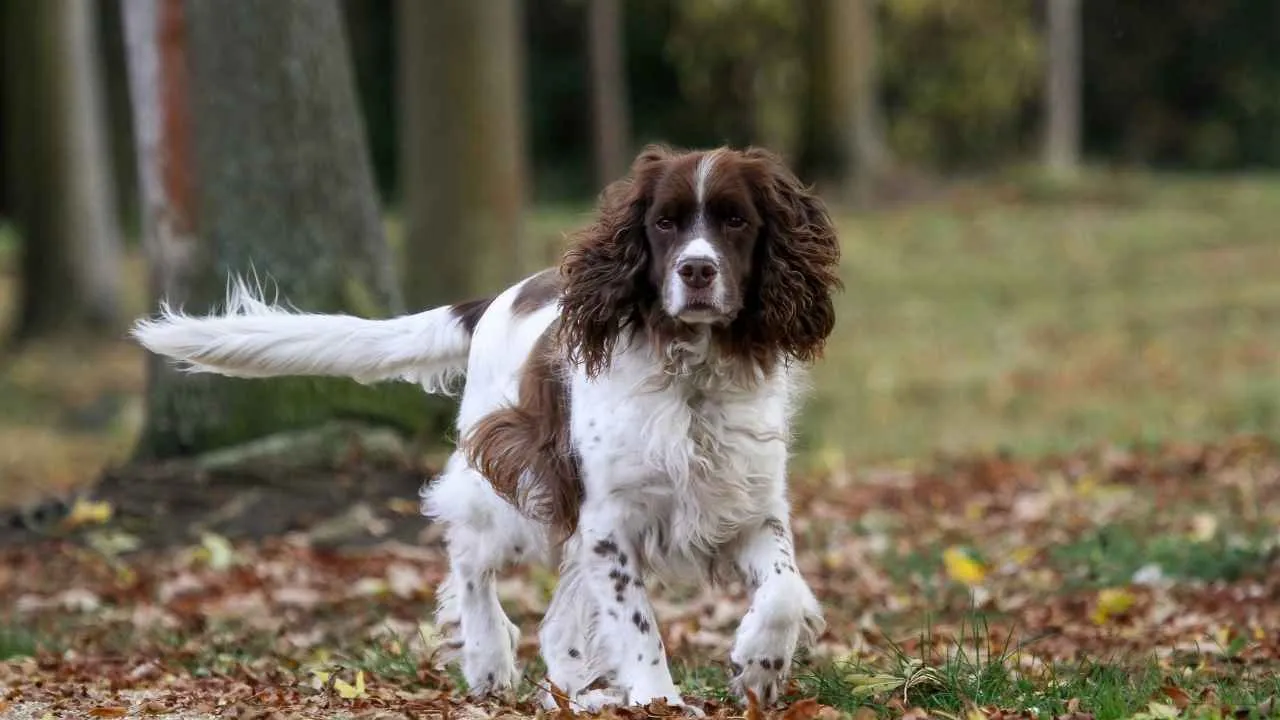
Originally developed in South Carolina in the early 1900s, the Boykin Spaniel was bred for hunting turkeys and waterfowl in swampy terrain. Known affectionately as “the little brown dog,” this medium-sized spaniel typically weighs between 30–40 pounds and stands under 18 inches tall. Boykins boast a signature chocolate, liver, or deep brown coat, floppy ears, and soulful amber eyes.
Their webbed feet make them excellent swimmers, ideal for navigating lakes and wetlands even in freezing temperatures. Beyond their sporting capabilities, Boykins are deeply affectionate and family-oriented, often forming close bonds with their human companions.
Care Needs
Boykin Spaniels require daily exercise to maintain both their physical health and mental well-being. A long walk, swim, or interactive playtime will keep them satisfied. Their medium-length double coat needs weekly brushing, with increased grooming during shedding seasons.
These social dogs thrive on companionship and should not be left alone for long periods. Training should be consistent yet fun, as Boykins respond best to positive reinforcement.
Did you know? The Boykin Spaniel is the official state dog of South Carolina and was originally developed from a stray named “Dumpy” that became a legendary hunting companion.
7. American Water Spaniel
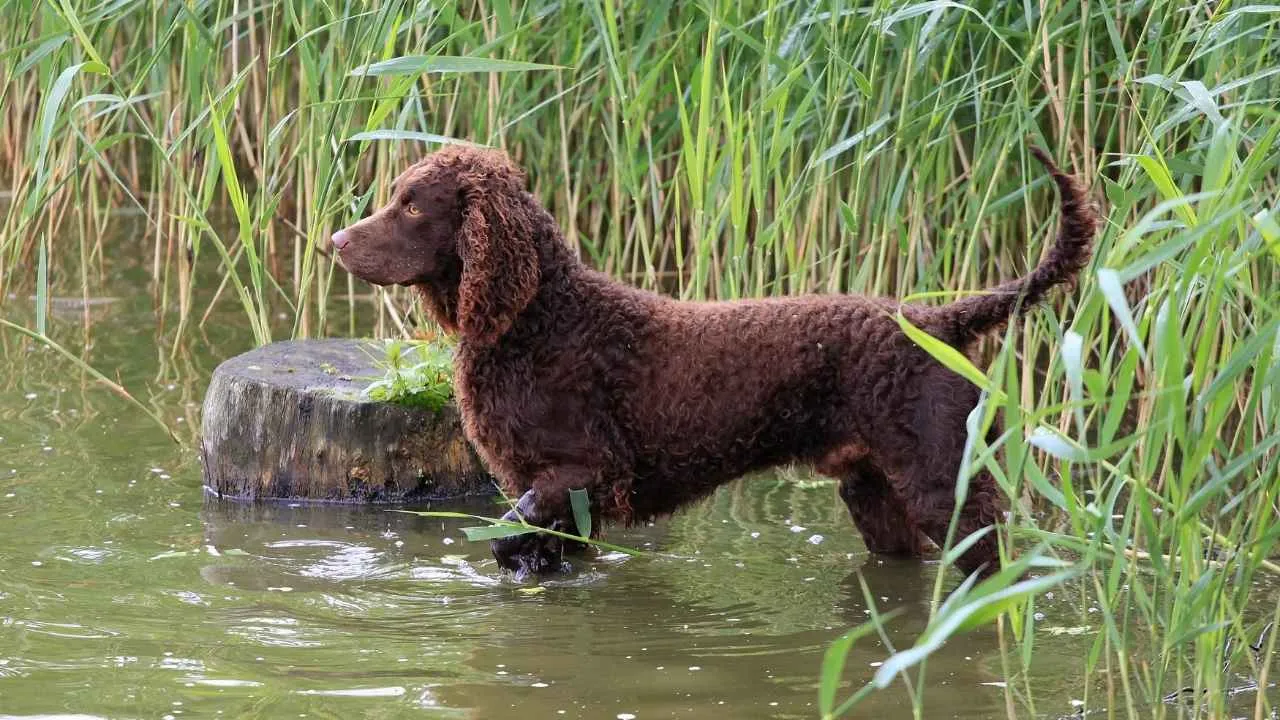
The American Water Spaniel, often referred to as the “AWS,” is a rare yet versatile sporting breed developed in the United States during the late 1800s. With roots in the Great Lakes region, this medium-sized dog stands between 15–18 inches tall and weighs 25–45 pounds.
It was bred to retrieve game from both land and water, which explains its strong swimming skills and muscular build. Recognizable by its water-resistant, curly or wavy chocolate-brown coat, the AWS has lobular, curly ears and expressive hazel to dark brown eyes that match its coat color.
As Wisconsin’s official state dog, this breed is not just a talented hunter but also a loyal family companion known for its affectionate yet slightly reserved nature around strangers.
Care Needs
This cold-weather dog breed thrives in active households. These loyal dogs need daily physical and mental stimulation to prevent boredom-related behaviors. Their water-repellent, thick coat sheds minimally but requires weekly brushing to avoid matting and to remove debris, with more frequent grooming during seasonal coat changes.
Dental care is essential, and brushing at least twice a week is recommended. Regular ear cleaning is also necessary, especially for puppies. These intelligent dogs respond well to training and love to engage in tasks or outdoor adventures.
Did you know? The American Water Spaniel is one of the few breeds developed entirely in the U.S. and was bred specifically for versatility in hunting both on land and in water.
Conclusion
When winter settles in, having a dog that thrives in cold climates can make snowy adventures even more enjoyable. Chocolate-coated breeds like the American Water Spaniel are not only striking in appearance but also built for chilly weather with their water-resistant curls and active spirit. These dogs are made for crisp morning hikes, cozy fireside rests, and exploring frosty landscapes. Whether you’re strolling through snow-dusted parks or navigating icy trails, their adaptability shines through.
While some chocolate breeds are perfectly suited for moderate cold, others like the Bernese Mountain Dog, Greater Swiss Mountain Dog, and Siberian Husky truly embody the spirit of snow dog breeds.
Some of them have rugged endurance and thick double coats, often with thick ears and large paws, making them natural sled dogs or companions for scaling snowy mountains. Even breeds like the American Eskimo Dog, though typically white, deserve mention for their resilience and charm in wintry conditions. These dogs are the ultimate allies for snow-loving owners.


